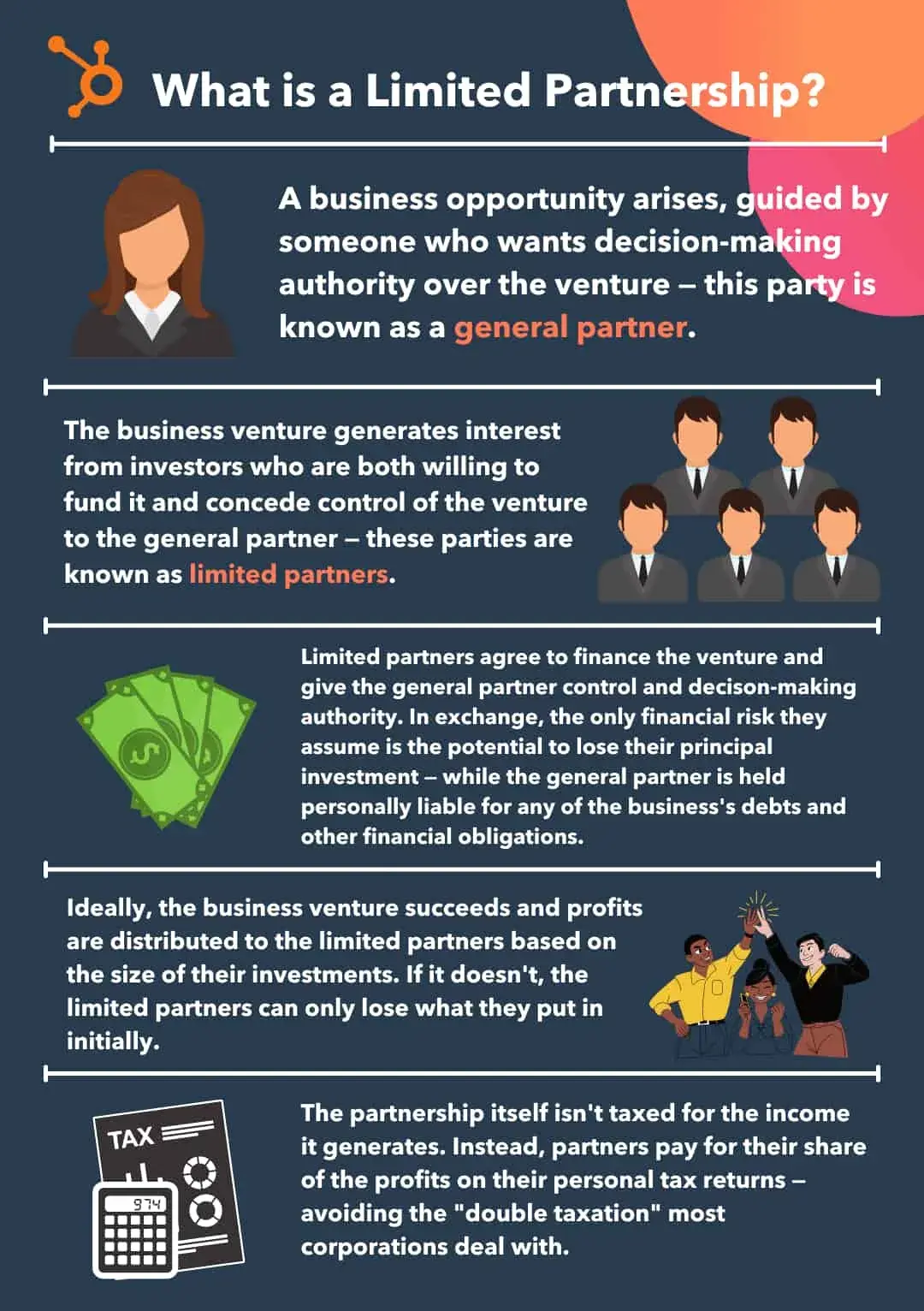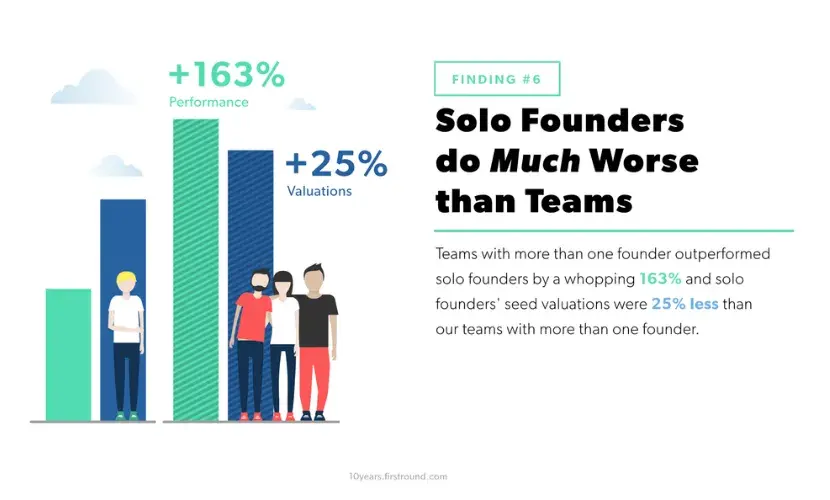Table of Contents
- What is a managing partner in an LLC?
- Managing Partner vs. CEO
- Why is a managing partner important for a business?
- Managing Partner Role and Responsibilities
- How to Become a Managing Partner
- Managing Partner Agreement
- Managing Partner Compensation
- What It Really Means to Be a Managing Partner
What is a managing partner in an LLC?
A Limited Liability Company (LLC) is a business structure that separates personal assets from business liabilities. In other words, if an LLC is being sued or goes bankrupt, the owner’s personal assets are not at risk.
This makes it different from other business structures like a sole proprietorship — a business structure with one owner who is not legally distinct from his or her business (most freelancers fall into this category). It’s also different from a corporation (e.g., Microsoft, Dominos), which has a different management structure and taxation scheme.
Within an LLC, owners are called members, and management can be structured in two ways:
- Member-managed LLCs where the owners (members) actively run the business.
- Manager-managed LLCs where members appoint a manager (who may or may not be a member) to handle operations.
In some cases, a managing partner (or managing member) is a member who also takes on leadership responsibilities, overseeing operations and guiding strategy. Unlike corporations, which have CEOs and boards of directors, LLCs often rely on managing members or partners to balance ownership, leadership, and daily business operations.
Mark Donnolo, managing partner at business consultancy SalesGlobe, describes the role as a mix of leadership and hands-on strategy. “I think of a managing partner as a first among equals,” he says. “It’s the person that’s leading the charge strategically.”
While many LLCs have a single managing partner, others share leadership responsibilities. For example, Beth Sherman and Nathan Palmer, co-founders of digital marketing firm Signify Digital, both act as managing partners, splitting management duties equally.
Managing Partners in Partnerships
A partnership, like an LLC, is a business structure where ownership is shared among partners. While all partners have a stake in the company, a managing partner typically takes on leadership duties, such as:
- Overseeing daily operations.
- Managing finances and strategy.
- Representing the business in key decisions.
Some partners may be actively involved in operations, while others act as silent partners, providing capital but taking a less hands-on role.
Managing Partner vs. CEO
I used to think managing partners and CEOs were basically the same thing — they both lead companies, right? But after diving into this, I’ve discovered some key differences that really matter.
The BasicsManaging partners are actually owners of their business (usually LLCs or partnerships), while CEOs are appointed by boards of directors to oversee a corporation’s strategic direction. This changes everything about how they operate.
Power and Decision-MakingManaging partners have real skin in the game. They own part of the business and make decisions alongside other partners. They usually report to an executive committee but have a lot of freedom in day-to-day decisions. CEOs, on the other hand, might get some stock options, but they’re ultimately answering to the board about every major move they make.
Money and Job SecurityThe pay structure really shows the difference. Managing partners live and die by the company’s profits — their income is directly tied to how well the business does. CEOs typically get a salary plus performance incentives like bonuses and stock options, all decided by the board.
What’s really interesting is what happens if things go south. A CEO can get fired by the board if they’re not meeting performance goals, plain and simple. But removing a managing partner? That’s way more complicated because they’re an owner. You’re usually looking at complex buyouts or restructuring the whole partnership agreement.
A 2024 report from the National Association for the Self-Employed (NASE) found that 58% of LLCs in the U.S. operate as member-managed, meaning the owners — often including managing partners — are actively involved in daily operations. In contrast, corporate CEOs are typically hired rather than being owners themselves.
In some cases, a person may hold both titles — legally designated as a managing partner but operating as a CEO in daily business functions. Whether “managing partner” is purely a legal designation or an active leadership role depends on the company structure.
The right leadership structure depends on the company’s needs. LLCs and partnerships thrive on direct ownership involvement, while corporations often prefer a separation between ownership and executive leadership. Managing partners have more job security but take on more financial risk, while CEOs have defined salaries but can be replaced at any time.
Managing Partner vs. Owner
In my conversations with managing partners, I’ve learned that ownership alone doesn’t define leadership — it’s the level of responsibility that sets managing partners apart.
- Managing partners don’t just own part of the business — they run it. They oversee operations, hiring, strategic growth, and decision-making.
- Other owners may be passive investors who contribute capital but don’t participate in daily management.
- Some businesses have multiple owners in executive roles, but only a few take on the title of managing partner, leading the company’s direction.
This leadership structure can be a game-changer for scaling a business. Daniel Snow, managing partner at TRAFFIX, a logistics company that scaled from $71 million to over $1 billion, credits their three-managing-partner model as a critical factor in their success.
“One of the key factors behind TRAFFIX’s remarkable growth… was the strategic leadership structure of having three managing partners, each with unique and complementary skill sets. This approach created a well-rounded leadership team that filled in skill gaps, ensured diverse perspectives, and eliminated decision-making deadlocks.”
He also emphasized that great managing partners know their weaknesses and rely on others to fill the gaps. Instead of trying to do everything themselves, they focus on building a strong leadership team and investing in people.
According to the IRS’s Statistics of Income Bulletin Fall of 2024, with partnerships filing 4.5 million returns and representing over 28 million partners in the 2022 tax year, it’s clear that defining leadership roles within these structures is crucial for sustainable growth.
For many businesses, the difference between an owner and a managing partner isn’t just about title — it’s about who steps up to lead.
Managing Partner vs. Limited Partner
Before speaking with managing partners, I assumed all business partners had similar levels of involvement. However, I quickly learned that limited partnerships are structured to separate management control from financial investment.
Limited partnerships have two types of partners:
- General partners. Actively manage the business and assume liability for debts.
- Limited partners. Provide capital but don’t participate in daily operations and aren’t liable for business debts beyond their investment.
A managing partner is typically a general partner who takes on leadership responsibilities, such as setting strategy, overseeing daily operations, and making key financial decisions.

According to the IRS, limited partnerships represent only 9.9% of all partnerships, yet they account for over 36% of total pass-through income — showing how financially impactful they can be despite being a smaller portion of business structures.
For example, venture capital (VC) firms often follow this model. The general partners (GPs) manage the fund and make investment decisions, while limited partners (LPs) — such as pension funds or wealthy individuals — provide capital but have no direct control over day-to-day operations.
Want to understand how a general partner differs from a managing partner? Check out the next section for a full breakdown.
General Partner vs. Managing Partner
While the terms general partner and managing partner are sometimes used interchangeably, they have distinct roles depending on the business structure.
A General Partner:
- Is found in limited partnerships (LPs).
- Takes on full liability for the business’s debts and legal obligations.
- Actively manages the business but may not be the sole decision-maker.
A managing partner:
- Is common in LLCs and partnerships.
- Is always an owner in the business.
- Has strategic and operational leadership responsibilities.
- May also be a general partner in a limited partnership.
Key Distinction: A general partner is responsible for managing a partnership, but in some cases, partnerships designate a managing partner to lead strategic direction and decision-making. In LLCs, managing partners function similarly but often operate within a more flexible structure.
Why This Matters: If you’re structuring a business partnership, understanding the difference between a general partner and a managing partner can help you determine the right leadership setup for your company.
Why is a managing partner important for a business?
One theme that stood out in my conversations with managing partners is that this role goes beyond a title — it requires making high-stakes decisions that directly impact the business. Managing partners drive strategy, make tough decisions, and ensure the business runs smoothly while balancing long-term growth.
From my perspective, a strong managing partner creates stability, fosters innovation, and sets a company apart from competitors.
1. Steering the Ship
From what I’ve seen, managing partners are right in the thick of every major decision, making sure everyone is pulling in the same direction. Whether they’re figuring out how to grow the business, handling risky situations, or adapting to industry changes, they keep things moving forward.
Take Jennifer Compton’s story at Shumaker. As the first managing partner of a law firm that’s been around since 1925, she puts it perfectly:
“When I started my career, I never set out with firm management as my specific goal. I just wanted to be a great lawyer. But each step — associate to partner, and eventually to leadership — was built on trust, accountability, and the desire to contribute to the firm’s long-term success.”
What hits me about Compton’s journey is what it reveals about great managing partners — they’re not just running the business today. They’re building something that lasts, creating opportunities and developing future leaders along the way.
2. Improved Decision-Making and Growth Potential
With their deep understanding of the business, managing partners ensure that decisions aren’t just reactive but aligned with long-term success. Their ability to navigate complex challenges is especially crucial for businesses aiming to scale.
First Round Capital’s research supports this, revealing that teams with more than one founder outperformed solo founders by 163%, and solo founders’ seed valuations were 25% lower than teams with multiple founders. These findings highlight how shared decision-making — like having a managing partner alongside other leaders — contributes to stronger business performance and financial outcomes.

I’ve seen firsthand how managing partners dive deep into the money side of things. They’re not just glancing at spreadsheets. They’re making tough calls about where every dollar goes and how to keep the business profitable. From haggling over contract terms to figuring out how to boost revenue, they’re the ones making sure the numbers add up.
In my conversations with managing partners, they consistently emphasized one thing: If you want your company to grow and stay profitable, you need someone at the top who really understands the financial side of the business. I’ve watched companies struggle when they don’t have this kind of financial leadership, and thrive when they do.
3. Talent Development and Employee Retention
A managing partner’s leadership extends beyond financial and strategic decisions — they also shape company culture. Prioritizing employee growth and fostering a collaborative environment leads to better retention, productivity, and overall job satisfaction.
I think Richard Branson, CEO and founder of Virgin Group, put it best: “Clients do not come first. Employees come first. If you take care of your employees, they will take care of the clients.”
Strong leadership at the top creates a ripple effect throughout the organization, leading to a more engaged and high-performing team.
4. Adaptability in a Changing Business Landscape
Industries evolve, so managing partners must stay ahead of trends and embrace change. Those who are willing to pivot, innovate, and adapt tend to be the most successful in leadership roles.
McKinsey’s 2024 report on business agility found that companies with adaptable leadership structures are 1.5 times more likely to outperform competitors in rapidly changing markets. This aligns with what I’ve heard from managing partners who emphasize long-term strategy over chasing short-term trends.
Rafikuzzaman Khan, managing partner at Microters Germany, shared how he approaches this challenge:
“Since I have to make crucial decisions, I’m now focusing on creating long-term strategies where we can integrate these changes in a sustainable way.”
Khan’s insight reinforces an important lesson — managing partners who stay ahead of industry shifts and technology trends position their businesses for long-term success.
Managing Partner Role and Responsibilities
A managing partner isn’t just another executive; they’re an owner who’s got their own money and reputation on the line. Unlike a CEO who might just be hired to run things, they’re personally invested in making the business work.
Here’s what they actually do:
- Strategy & Vision. These folks handle the big-picture stuff while getting their hands dirty with day-to-day operations. When the market shifts or new opportunities come up, they’re the ones making the calls on where the company needs to go, because their own success depends on it.
- Problem Solving. They’re problem solvers, plain and simple. If something’s not working — maybe the operations are a mess, money’s tight, or growth has stalled — they’re in the thick of it. They can’t just pass it off to someone else because, ultimately, it’s their business at stake.
- Financial Oversight. Money matters fall squarely in their lap. They’re watching the budget, deciding where to invest, and making sure the company’s actually making money. It’s their own wallet on the line, so they tend to think twice about every major financial decision.
- Team Building. Good people make or break a business, and managing partners know it. They’re constantly thinking about who to bring on board, how to keep their best people around, and what kind of workplace they’re building. The culture starts with them.
- Relationship Management. When it comes to dealing with important clients or keeping everyone in the loop, that’s their job, too. They’re the ones schmoozing with clients, updating investors, and making sure their team knows what’s what.
How Managing Partners Divide Responsibilities
Managing partners don’t always oversee every function directly — they often delegate responsibilities based on their strengths, background, and business needs.
For example, Mark Donnolo, managing partner at SalesGlobe, takes a hands-on approach to business development, intellectual property creation, and content marketing. His focus stems from his background and expertise in these areas. Other managing partners may emphasize different priorities.
At Signify Digital, a U.K.-based marketing agency structured as a limited company (similar to an LLC in the U.S.), Beth Sherman and Nathan Palmer split responsibilities based on their strengths.
“Having two partners suits our business well,” says Sherman. “While we have the same passion and vision, we each bring a different skill set to the company.”
Sherman leads client management and business development, while Palmer focuses on work delivery and campaign strategy.
Using Tools to Manage Growth
Since managing partners are responsible for business growth and client relationships, having the right tools can make all the difference. Platforms like HubSpot’s Sales Hub help managing partners:
- Streamline sales operations.
- Track business performance.
- Nurture client relationships.
By leveraging automation and analytics, managing partners can spend less time on manual tasks and more time driving strategy.
I’ve learned that this flexibility is a key benefit of the managing partner structure. Partners can tailor their roles based on what best serves the company. Some managing partners take an active leadership role, while others act more as investors or strategic advisors. The key is ensuring that all core responsibilities are covered, whether through delegation or direct oversight.

[alt text] managing partners, HubSpot Sales screenshot showing Prospecting dashboard
Get started with Sales Hub today.
How to Become a Managing Partner
Through my conversations with managing partners, I’ve learned there’s no single path to this role. Some rise through the ranks in their firms, others transition from entrepreneurship, and some find leadership after unexpected career shifts. I think what stands out in each journey is a mix of expertise, adaptability, and a willingness to take on responsibility.
Here’s how four managing partners built their careers — and what aspiring leaders can learn from them.
1. Moving From Specialist to Leader
For many managing partners, the first step is mastering their field before stepping into leadership. Jennifer Compton, the first managing partner of Shumaker law firm, spent years specializing in employment law counseling and litigation before taking on firm-wide leadership.
She initially served as vice chair of Shumaker’s management committee and managed the firm’s Sarasota office before becoming the first person to hold the managing partner title.
Her journey highlights an important truth: Leadership opportunities often emerge for those who build deep expertise and earn the trust of their peers.
2. Scaling a Business as a Managing Partner
For some, the path to becoming a managing partner happens through growing a company strategically. Daniel Snow, managing partner at TRAFFIX, helped dramatically scale the business, but his journey began long before that.
Growing up in a family-owned logistics company, Snow was immersed in the business from an early age. After completing university, he launched his own company and later merged it back into TRAFFIX. This blend of entrepreneurship and operational experience positioned him for leadership.
“I learned early on to ask myself two key questions: ‘What can I do better?’ and ‘What can the company do better?’” Snow explained. “By acknowledging my limitations and investing in the growth of others, I helped foster an environment where the business could expand well beyond the initial vision of its founders.”
Looking at his story, I’ve realized that scaling isn’t just about watching revenue grow — you’ve got to have the right leaders steering the ship.
3. Reinventing Leadership After Setbacks
Not every managing partner starts with a clear path to leadership. Yusef-Andre Wiley, managing partner at Timelist Group, turned his life around after a period of incarceration, proving that leadership can emerge from unexpected places.
“Once I began taking courses related to self-help and business management, my lifestyle began to change,” Wiley said. “Empathy became my landing place, which enabled me to deal with people where they are at — not to harm, not to judge, and to believe in second chances.”
His work in re-entry housing and rehabilitation programs for former felons led to partnerships with funders, elected officials, and nonprofit leaders — eventually growing Timelist Group into a recognized organization.
When I look at Wiley’s path, I’m reminded that technical skills only get you so far. What really matters is having a vision you believe in, pushing through the tough times, and using your past experiences to make a real difference.
4. Leaving Corporate to Build Something New
Some managing partners step into the role after realizing they want to lead differently. Yvette Schmitter, managing partner at Fusion Collective, spent years in corporate tech leadership, working her way up at a Big Four consulting firm before making a bold decision: to leave and build something of her own.
“The turning point came when I realized two fundamental truths: The organizational culture I was in no longer aligned with my soul’s purpose, and there were entire communities being overlooked that I knew I could help transform,” Schmitter said.
She launched Fusion Collective with a mission to make technology more accessible and equitable, proving that sometimes the best way to lead is to create the kind of business you want to see in the world.
Common Steps to Becoming a Managing Partner
While each of these managing partners took different paths, I noticed some common themes in my research and conversations. If you’re looking to step into this role, here are some key steps that can help.
1. Educational Foundation
While there’s no formal requirement, most managing partners start with a bachelor’s degree in business, law, or finance. An advanced degree like an MBA can further set candidates apart — particularly in finance-heavy industries. About 22% of the world’s top CEOs hold an MBA, highlighting its value in leadership roles.
2. Gaining Practical Experience
Before stepping into leadership, building experience in management roles is crucial. This might involve:
- Internships or early career roles in business management.
- Climbing the ranks from entry-level to partner.
- Gaining operational experience in a specific industry.
Many managing partners start as specialists in their field before expanding into business management.
3. Strategic Networking
Managing partners often rise through strong professional networks. Relationships with mentors, industry leaders, and business partners can open doors.
According to findings from a 2022 survey, 42% of professionals found their current jobs through some form or effect of networking, including referrals, applying to openings shared in their network, and more.

4. Taking on Leadership Roles
Most managing partners serve in leadership capacities before they officially get the title. Whether it’s:
- Managing an office location.
- Leading a department.
- Running major firm-wide initiatives.
Compton’s career is a great example of this. She served as vice chair of Shumaker’s management committee and managed a regional office before stepping into the managing partner role.
5. Understanding Business Operations
A managing partner isn’t just a high-level executive — they’re often directly responsible for a firm’s financials, hiring, and operations. Learning how a business runs from the inside out is key to success.
6. Continuous Learning and Adaptability
Since industries evolve, it’s imperative for managing partners to stay up on trends to make strategic decisions. Those who continuously learn will innovate and adapt, leading to success in leadership roles.
Key Takeaways From Managing Partners’ Career Paths
While no two paths to becoming a managing partner are identical, some common themes emerged:
- Build deep expertise first. Becoming an expert in your field creates credibility and trust.
- Take leadership opportunities early. Managing partners often serve in leadership roles long before the title is official.
- Help scale a company strategically. In growth-oriented firms, managing partners play a direct role in business expansion.
- Adapt to change. Staying ahead of industry shifts is critical to long-term success.
- Develop a strong leadership style. Managing partners shape not just business strategy but also company culture.
Whether you work your way up within a firm or launch your own business, the path to managing partner requires a mix of skill, strategy, and opportunity.
Managing Partner Agreement
A partnership agreement is a written agreement between business partners or LLC members. It lays out important information about the company, such as:
- Capital contributions — how much capital each partner has contributed.
- Equity agreement — how much of the company each partner owns.
- Operating details — the responsibilities of each partner.
- Compensation agreement — how each partner will be paid.
- Disputes — how they will be resolved.
- New partners — if, when, and how someone can become an owner.
- Exit agreement — what happens when a partner leaves the partnership.
- Decision rights — whether decisions require consensus or a majority, for example.
Sometimes, you need to draw up this agreement early on, especially if there are seed investors who want to contribute capital and need to know their rights and ownership share.
At other times, if you are starting a new venture, you may not know who will be involved and whether you will raise investment. In that case, you might want to let the idea shape out a little before you formalize things.
That being said, it’s very important to get things on paper.
“Teaming up with people always seems fun and rosy and optimistic in the beginning,” says Donnolo, “but when things really get tough, that’s when personalities and differences start to show. Operate on the assumption that we need to make sure everybody’s gonna be protected, just in case.”
Donnolo recommends speaking to an attorney and, if you can afford it, an executive compensation consultant when you write up your agreement. However, there are some simple templates you can start with if that’s out of your budget. The agreement should be reviewed and tweaked as your company grows and evolves.
Managing Partner Compensation
Compensation structures for managing partners can be complicated, as they can take different forms and will vary from one business to the next.
Distributive Share
Partnerships (as well as some LLCs) are flow-through tax entities, which means the company’s income (both profits and losses) passes directly on to the owners. This is called a distributive share.
Most of the time, partners receive a distributive share that is proportional to their ownership percentage. For example, if one partner owns 80% of the business and the other owns 20%, they will split any profit 80-20.
Partners can also choose to divide their income however they like by outlining the arrangement in their partnership agreement. This can be done for tax purposes or for any other reason, such as if one partner is taking more of a reputational risk.
Guaranteed Payment
According to IRS rules, a partner cannot be considered an employee or be put on the payroll. However, if a partner contributes services or capital to the business, they may receive a guaranteed payment in lieu of a salary.
This is a fixed payment that ensures the partner has predictable income even if the company doesn’t make a profit. Guaranteed payments differ from a salary in that they are not subject to payroll tax. Instead, they will be taxed as ordinary income as part of the partner’s individual tax return.
Managing partners and any other active partners may also receive an additional payment in lieu of a performance incentive or bonus, but again, this payment is not taxed via payroll and is not technically classified as a paycheck.
In Sherman and Palmer’s case, they split everything 50-50. They take a fixed amount from the business each month and review that figure every six months. Any excess profit is reinvested in the business or kept in a fund for future use.
“We have found that an equal share of decisions, challenges, and rewards keeps us both motivated and on our toes at the same time,” says Sherman.
Equity
Of course, the owners’ biggest advantage is owning a portion of the business. If the business grows and succeeds, the owners’ equity portion will become an increasingly valuable asset.
Compensation in an LLC
By default, an LLC with multiple members is treated by the IRS as a partnership. This means the managing partner’s compensation will be paid (and taxed) in the same way as if the business was a partnership.
However, an LLC can also choose to be treated as a corporation, which is sometimes done for tax purposes. In that case, members must be hired as employees and paid a salary to earn an income. They can also earn a share of the profits in the form of dividends.
If your business is an LLC, it’s a good idea to consult an accountant to work out salary and dividend amounts, as there are regulations and tax implications.
What It Really Means to Be a Managing Partner
Before writing this piece, I assumed a managing partner was simply a business owner with leadership responsibilities. But, after speaking with managing partners across industries, I learned the role is far more strategic and adaptable than I expected.
For some, like Jennifer Compton at Shumaker, leadership was a natural next step after years of earning trust and honing expertise. Others, like Daniel Snow at TRAFFIX, scaled their businesses into industry leaders. And then there’s Yusef-Andre Wiley, whose path was shaped by personal transformation and a drive to create real change.
I learned there’s no single path to becoming a managing partner — some rise through the ranks, others start their own businesses. While an MBA or business degree helps, real-world experience, leadership skills, and strategic thinking matter just as much.
And despite their different backgrounds, every managing partner I spoke with emphasized the same thing: You can’t do it all alone. Success comes from building the right team, focusing on strengths, and leading with intention.
Sales Management







.jpg)


![How to Run a Team Effectiveness Assessment [Questionnaire]](https://53.fs1.hubspotusercontent-na1.net/hubfs/53/Team%20Effectiveness%20Assessment%20(1).jpg)
-1.jpg)
-1.jpg)